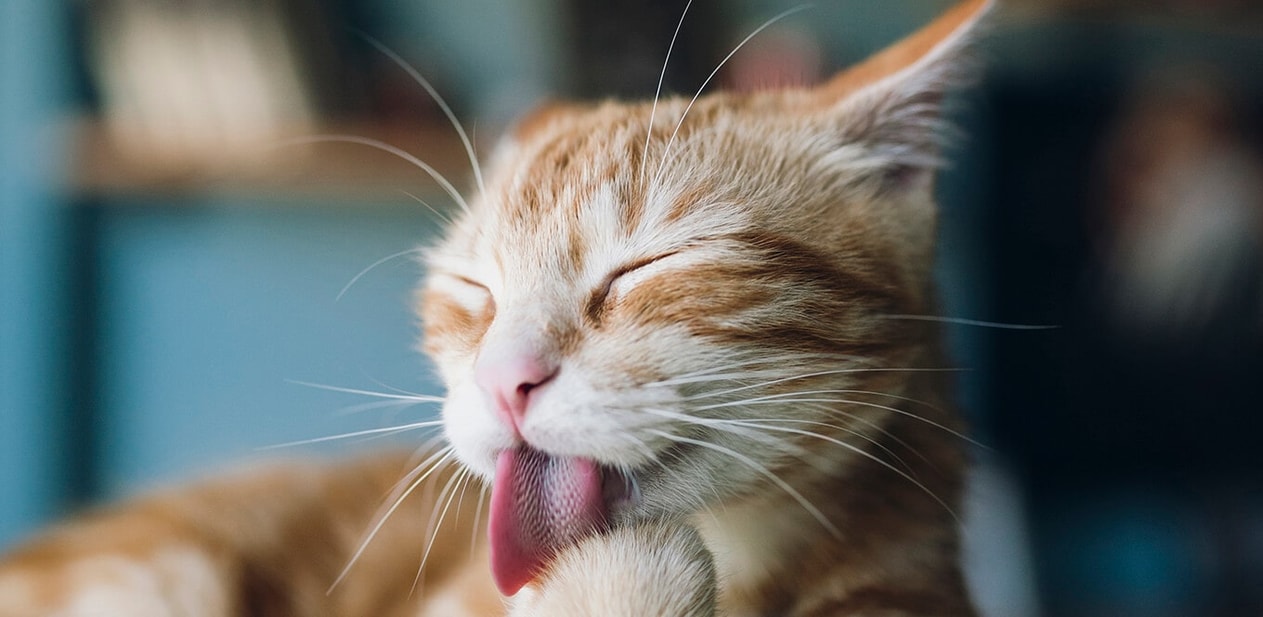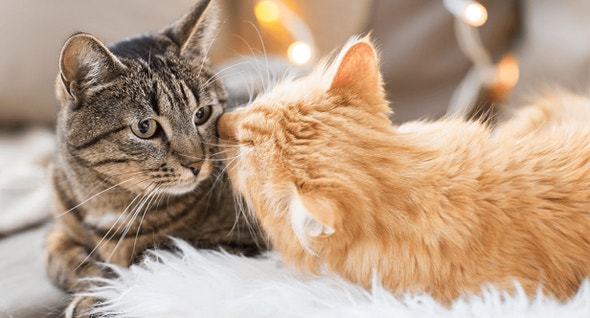
Stomach Issues in Cats: Why Cats Vomit and What to Do
Every cat owner knows the warning signs: the mournful meow, the gagging and the heaving retch. Moments later, just as suddenly as it began, your cat is feeling fine while you’re left scrubbing the carpet.
The scenario is a familiar one for Cynthia Bowen of Cleveland, Ohio. As the owner of four Maine coons, Bowen has cleaned up her share of messes. “It would happen every couple of months or so,” she says. “Otherwise, they were perfectly healthy.”
Many owners accept vomiting and stomach issues as an inevitable part of owning a cat, but it doesn’t have to be that way. Knowing what triggers an upset stomach and what you can do about it will make for a better relationship with your cat (and fewer scrubbing sessions for you).
Why Cats Vomit
“It’s careless to assume that most cases of vomiting in cats are due to hairballs,” says Dr. William Folger, a DVM from Houston. Many owners chalk up their cat’s vomiting to common hairballs, but they’re not the only potential culprit. Two other frequent causes of an upset stomach are eating too fast and curiosity.
Eating Too Fast
Cats sometimes eat too much too fast. When the stomach wall expands too quickly to accommodate all that food, it sends a signal to the brain to cause regurgitation — not actual vomiting. Regurgitation brings up fluid and food from the esophagus by opening the mouth — unlike vomiting, which involves symptoms like gagging and retching.
Regurgitated food is still formed and may smell a bit fermented. “Cats that eat too quickly because they are gluttonous or stressed by food-bowl competition can regurgitate right after eating,” says Dr. Sara Stephens, a DVM from Montana.
But don’t assume regurgitation is always a case of eating too quickly. It could be caused by esophageal problems, obstruction of the digestive tract, hairballs or dehydration. If you’ve forced your cat to eat slowly and they still have problems, contact a veterinarian.
Curiosity
Grass, carpet and toilet paper … they’re all so interesting! They’re also just a few of the things cats may eat, digest and later vomit. This vomiting is a protective mechanism — nature’s way of cleaning out your cat’s system quickly when they eat something they shouldn’t.
Curiosity can lead to more serious problems than vomiting, depending on what your cat finds and eats. String, toy parts and feathers are classic feline favorites that can lodge in the stomach or intestine and cause repeated vomiting and severe distress. Take your cat to a veterinarian immediately if they have these symptoms — surgery is often necessary to remove objects like these, and the sooner your cat gets medical attention, the better.

When Vomiting in Cats Is Cause for Concern
Repeated cat vomiting should never be ignored, medical attention may be needed for frequent vomiting, and in the short term, repeated vomiting can lead to serious dehydration. But because vomiting is common in cats, how do you know what’s normal? “A general guideline is that if the cat is vomiting one to three times a month, we consider this normal,” says Dr. Folger.
He considers it serious if the vomiting occurs twice daily for two or three days. If your cat stops eating, seems to have stomach pain or retches continuously, or if the vomit is mixed with blood, take them to a veterinarian. And as always, if you’re suspicious that a lingering problem could be harmful to your pet, call your veterinarian. A visit to the office can help relieve your cat’s discomfort and your worries as well.
Preventing Your Cat from Vomiting
Often, owners accept their pet’s vomiting as a natural part of their behavior, but just because cats seem to have more than their fair share of stomach issues doesn’t mean their discomfort (and yours) is inevitable!
Help Your Cat Eat More Slowly
One simple preventive measure is to get your fast-eating cat to slow down or to simply eat less. Dr. Stephens recommends feeding smaller portions, elevating your cat’s food dish slightly or putting a cat-safe object like a ball into the dish. The cat will be forced to eat around the ball, thus slowing their intake. If you do this, make sure the ball isn’t small enough to swallow. You can cut down on competitive eating in a multiple-cat household by feeding cats at different times and in different places.

Adjust Your Cat’s Diet
If simple solutions don’t work, it may be time to switch to a different cat food. Here are some tips for helping make sure your cat’s food transition is as successful and comfortable as possible:
- Go slowly. Change your cat’s diet gradually to give them time to adjust. “Make sure the cat eats something every day,” Dr. Stephens advises. “A cat that quits eating suddenly can develop liver problems.”
- Add appeal. Switching from wet to dry food or vice versa should also be done gradually. Many cats find canned food more palatable. If you switch to dry food, add water and warm it slightly for more appeal. Discard uneaten food after 20 minutes to prevent spoilage.
- Measure up. How much should you feed your cat? Your cat’s age, sex, breed, activity level and overall health need to be taken into consideration. Talk with your veterinarian, and then read the manufacturer’s recommendations. Premium foods like IAMS™ cat foods are more nutrient-dense than many nonpremium diets, so don’t be surprised if the recommended amounts seem low.
- Pay attention. Beyond careful measuring, make sure to regularly weigh your cat and adjust your feeding schedule or portion sizes if necessary. Your cat may appear happy with a little overfeeding, but over time weight gain can become a problem. If it does, transitioning to a weight-reduction food is a healthy, nutritious way to support reaching and maintaining a healthy weight.
If your cat vomits more than three times a month or has chronic stomach issues, you can take several steps to help. With your veterinarian’s support and a little effort on your part, your cat’s stomach issues can be a thing of the past.
Vomiting may be common for cats, but by understanding why it happens, you can help reduce how often your cat throws up. Sometimes your cat’s body is just trying to relieve digestive discomfort, but at other times their vomiting may be a sign of something more serious. Paying attention to your cat’s behavior and monitoring how and what they eat is the best way to understand their health. And that’s one great way to help them live a happy and healthy life!




